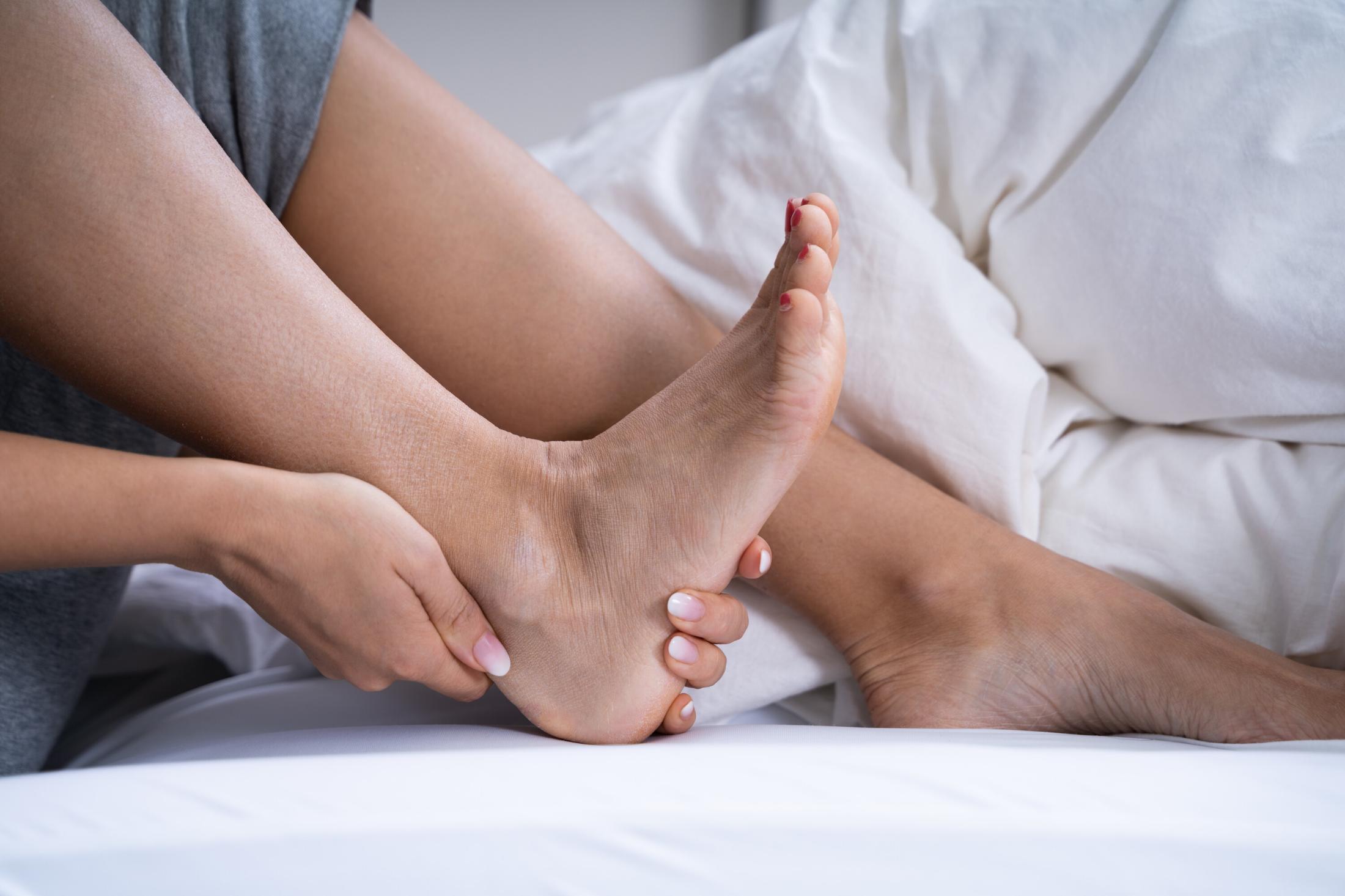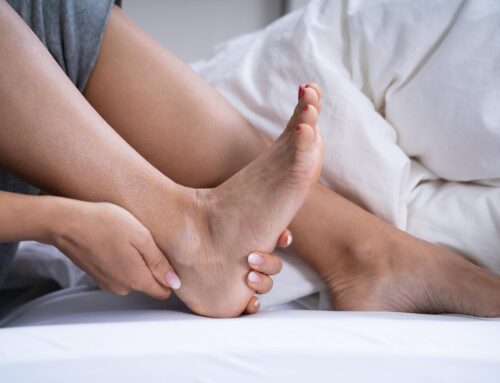Winter naturally puts extra pressure on our feet and legs. Heavier boots, colder temperatures, icy sidewalks, and long stretches of sitting indoors all influence circulation and overall comfort. Many people notice changes during this season, more swelling, a sense of heaviness, or fatigue after walking in winter footwear.
A bit of thoughtful preparation helps keep your feet and legs comfortable and supported throughout the colder months. Simple habits can ease strain, encourage healthy circulation, and make daily movement feel easier.
These tips are especially valuable for anyone dealing with swelling, tired or achy legs, vein concerns, or those who use orthotics or compression garments for everyday support. Winter may bring new challenges, but with gentle, consistent care, your feet and legs can stay at their best.
Winter’s Effect on Circulation, Comfort, and Mobility
As temperatures drop, our bodies naturally respond by redirecting warmth to protect vital organs. One side effect of this process is reduced circulation in the feet and legs. Blood vessels narrow in the cold, making it harder for oxygen and nutrients to reach the tissues that keep us moving comfortably.
Winter footwear can also play a part. Boots are heavier, stiffer, and often less flexible than the shoes we wear the rest of the year. While this added protection is helpful in icy conditions, it can change the way your feet move and increase fatigue, especially if you rely on orthotics for support.
And with shorter days and more time spent indoors, many people find themselves sitting for longer periods. Less movement means slower blood flow, which can lead to swelling, leg heaviness, and general discomfort.
Understanding these changes can help you prepare before symptoms become bothersome. With the right support and a few mindful habits, your feet and legs can stay warm, active, and comfortable throughout the winter season.
Finding the Right Boots for Your Needs
Choosing the right winter footwear is one of the simplest ways to keep your feet and legs comfortable in colder months. Winter boots are designed to protect you from the elements, but their extra weight, insulation, and stiffer materials can change how your feet move and how much support you feel throughout the day.
Look for boots that offer good ankle stability, a supportive sole, and a roomy toe box so your toes can move freely, even with thicker socks. If you wear orthotics, it’s important to make sure your winter boots can accommodate them properly. Orthotics that fit well in summer shoes may sit differently in winter footwear, sometimes causing pressure points or reducing their effectiveness.
A quick way to check fit at home is to insert your orthotics and walk around for a few minutes. Pay attention to any rubbing, slipping, or new areas of discomfort. These changes often have simple solutions, and a small adjustment can make a big difference in how your legs feel by the end of the day.
If something doesn’t feel quite right, you don’t have to push through the season feeling uncomfortable. A quick fitting or assessment can help ensure your orthotics are working as they should.
Easy Ways to Improve Winter Circulation
One of the biggest challenges in winter is simply keeping blood moving through the feet and legs. Colder temperatures naturally slow circulation, and when you combine that with more time spent sitting indoors, it’s easy to feel stiff, swollen, or heavy by the end of the day.
A few minutes of movement every couple of hours can help prevent blood from pooling in the lower legs. Simple activities, like ankle circles, calf raises, or walking a few laps around your home, are enough to wake up the muscles that support healthy circulation. If you sit for long periods, try elevating your legs in the evening to give them a break and help reduce swelling.
Staying hydrated matters just as much in winter as it does in summer. Many people naturally drink less water in colder weather, but consistent hydration helps blood flow more easily and supports the health of the tissues in your feet and legs. Warm socks can offer extra comfort as well, just make sure they’re not too tight, since snug cuffs can restrict circulation instead of helping it.
These small habits are easy to work into your day and can help your feet and legs feel lighter, warmer, and more comfortable throughout the season.
Supporting Swelling, Fatigue, and Vein Health with Compression
Winter is often the time when people notice their legs feeling heavier or more tired, especially after long days in boots or spending extra time indoors. Compression stockings can offer gentle, consistent support that helps improve circulation, reduce swelling, and ease that end-of-day heaviness many people experience.
Compression works by applying graduated pressure, snugger at the ankle and lighter as it moves up the leg, to help guide blood flow upward. In colder months, when circulation naturally slows, this can make a meaningful difference in comfort and mobility. Many people also find that compression helps prevent the tired, achy feeling that comes from standing or sitting for long periods.
If you wear compression regularly, winter is a good time to check that your garments still fit properly. Thicker winter clothing, extra layers, and heavier boots can all change how compression feels throughout the day. Stockings should never feel painfully tight, roll down, or bunch under clothing; they should feel supportive, warm, and comfortable.
For those considering compression for the first time, a proper compression garment fitting ensures you get the right level of support for your needs.
Winter Skin Care for Your Feet and Legs
As the temperature drops outside, indoor heating rises, and while it keeps us warm, it can also dry out the skin on our feet and legs. Dry, flaky, or cracked skin is especially common in winter and can make even small irritations feel more noticeable.
Applying a gentle, fragrance-free moisturizer once or twice a day helps keep the skin on your feet soft and protected. Just remember to avoid putting lotion between the toes, where too much moisture can create irritation instead of relief. If your heels tend to crack in the winter, using a thicker cream at night and wearing breathable socks can help lock in moisture.
Warm baths or foot soaks can also support comfort and circulation. A short soak (10–15 minutes) in warm (not hot) water helps relax tight muscles and soothe tired feet. Adding Epsom salts isn’t necessary for most people, but the warmth alone encourages blood flow and eases stiffness from long days in boots.
Keeping Your Legs Active
Even when the weather is cold and days feel shorter, a little movement can go a long way in keeping your feet and legs comfortable. Staying active doesn’t have to mean long workouts or braving icy sidewalks. Simple, gentle movement throughout the day is enough to support healthy circulation and reduce stiffness.
Short indoor walks, light stretching, or using the stairs a few times can help awaken the muscles that keep blood flowing through your legs. If you prefer something more structured, small routines like calf stretches, ankle rolls, or a few minutes of marching in place are easy to fit into your schedule. These movements are especially helpful if you sit for long periods or spend much of the day in winter boots.
Even cozy activities, such as standing to stretch during a TV show or doing a few leg movements while waiting for the kettle to boil, can make a noticeable difference. The goal isn’t intensity; it’s consistency. Every bit of gentle movement keeps your legs feeling lighter, warmer, and more resilient during the colder months.
Remember, winter can make us feel slower and more sedentary, and that’s okay. Being kind to yourself while adding small moments of movement helps your body stay comfortable and supported all season long.
Noticing Changes? Here’s When to Check In
As the seasons change, it’s common to notice new sensations in your feet and legs. Winter can amplify issues that feel manageable during the rest of the year, simply because circulation slows and footwear becomes heavier. Paying attention to how your body responds can help you catch small concerns early and stay comfortable through the colder months.
You might benefit from additional support, such as orthotics or properly fitted compression, if you experience:
- Increased swelling at the ankles or lower legs
- Heaviness or fatigue after walking in winter boots
- More pronounced vein discomfort or visible swelling
- Achiness in the arches, heels, or knees
- New pressure points where footwear rubs or feels uneven
- A return of old foot or leg symptoms you haven’t felt since last winter
These signs don’t necessarily mean something is wrong, they’re simply your body’s way of telling you it needs a little extra care.
If something doesn’t feel quite right, or your winter footwear affects the way your orthotics or compression garments fit, a brief assessment can help make sure everything is supporting you properly. Care-Med’s specialists can guide you in choosing the right type of support for your needs. Swelling, foot pain, and general winter discomfort are all areas where the right fit can make a meaningful difference.
Caring for Your Feet and Legs Through the Season
Winter doesn’t have to mean discomfort or heavier, achier legs. With a few simple habits, choosing supportive footwear, keeping circulation moving, caring for your skin, and checking in on how your orthotics or compression garments are fitting, you can stay comfortable and active all season long.
Your feet and legs work hard for you every day, especially during the colder months. A little extra care now can help prevent strain and keep you feeling steady, supported, and ready for whatever winter brings.
If you’re unsure about the support your feet or legs may need, Care-Med’s team is always here to guide you toward what feels best for your body and daily routine.
Share This Story, Choose Your Platform!
Table of Contents
- Winter’s Effect on Circulation, Comfort, and Mobility
- Finding the Right Boots for Your Needs
- Easy Ways to Improve Winter Circulation
- Supporting Swelling, Fatigue, and Vein Health with Compression
- Winter Skin Care for Your Feet and Legs
- Keeping Your Legs Active
- Noticing Changes? Here’s When to Check In
- Caring for Your Feet and Legs Through the Season
We specialize in orthotics, body braces, and compression wear tailored to your unique needs in Toronto. Reach out to us at info@caremed.care or call 416-782-5353 to book your fitting and consultation.
Experience the difference of customized solutions designed just for you.











